Formula E's season-ending race a victory lap for the sport, creator

Three years ago, Alejandro Agag was not a celebrated motorsports visionary. He was a crackpot. He was a man with a loopy idea—an all-electric, globetrotting, Formula-grade racing series—but with no real place to implement it.
The city, Agag thought, would be perfect. Along with hammering home a notion that couldn’t seem more, well, off-track—environmental sustainability—a city race could meet the masses. So the 44-year-old Spaniard picked the biggest city he could think of—London, where he lives with his wife and four kids—and made his pitch to officials.
While it was true Agag had no teams, no sponsors, or any broadcast partners to speak of, he did have a car: a battery-operated single-seater that was co-engineered by British and French firms and designed by the go-to racing art house from Italy, Dallara. (So, it was a triumph of globalization then.) Agag also had a crystal clear sense of where a race could be staged: right off the River Thames, inside picturesque Battersea Park. The officials, while intrigued by the greenness of his newfangled racing machine, still had concerns about pollution. Noise pollution.
Helio Castroneves: Heading for a really, really hot race at Fontana
“It doesn’t make any noise,” Agag told them.
O.K., the City said. Prove it. Take the car to the park at four in the morning and race it around the park. If anybody calls to complain, the race is off.
So in the middle of the summer, after the park was helpfully closed down and Agag outlined his circuit, a driver was loaded into Agag’s oversized RC racer and sent into orbit. “We went, like, 10 times around the park,” Agag says with a chuckle, “before they finally told us to stop.”
This weekend, the journey comes full circle. Agag’s big idea, now better known to the world as Formula E, will conclude its inaugural season at Battersea Park, the place where it all started, in a Saturday-Sunday doubleheader. (Live coverage for both races starts 10:30 a.m. Eastern on Fox Sports 1.) This time around, however, expect Agag's electric company, of which he is CEO, to make a bit more noise. The past nine-and-a-half months have seen Formula E descend upon the downtowns of Miami, Moscow and Beijing, just to name three stops along the 11-race tour, and leave throngs of spectators buzzing in its wake.[daily_cut]
This was bound to happen. As a pure racing product, Formula E is as exciting as any. While the racecars in this series don’t have as much horsepower as open-wheel analogs in IndyCar and Formula 1, they have produced an intense competition nonetheless. The last nine races have been won by seven drivers, all of them boasting impressive racing credentials.
“A good driver will jump from F1 or jump from a fast car and not even feel a difference in Formula E,” says driver Lucas di Grassi, who sits 17 points out of first place in the standings. “What is difficult about Formula E is the battery management, the engine management.
“In the race you have to achieve a certain amount of laps per car. If you drive as fast as possible, which is the way you drive in qualifying, you don’t get there. You have to know how to set up the car in a way that you are able to be fast and efficient. This is the tricky part.”
Di Grassi, a cheery Brazilian racer (is there any other kind?) who was one of the first to sign on to Agag’s crazy scheme, thought he had done just that last month, when Formula E touched down in Berlin. But moments after claiming what he immediately understood to be his second victory of the season (the first coming in Formula E opener in Beijing), di Grassi was suddenly disqualified. His crime? Modifying the front wing of his car, or making an adjustment that wouldn’t raise an eyebrow in another racing series.
Photos of the 2015 Indianapolis 500
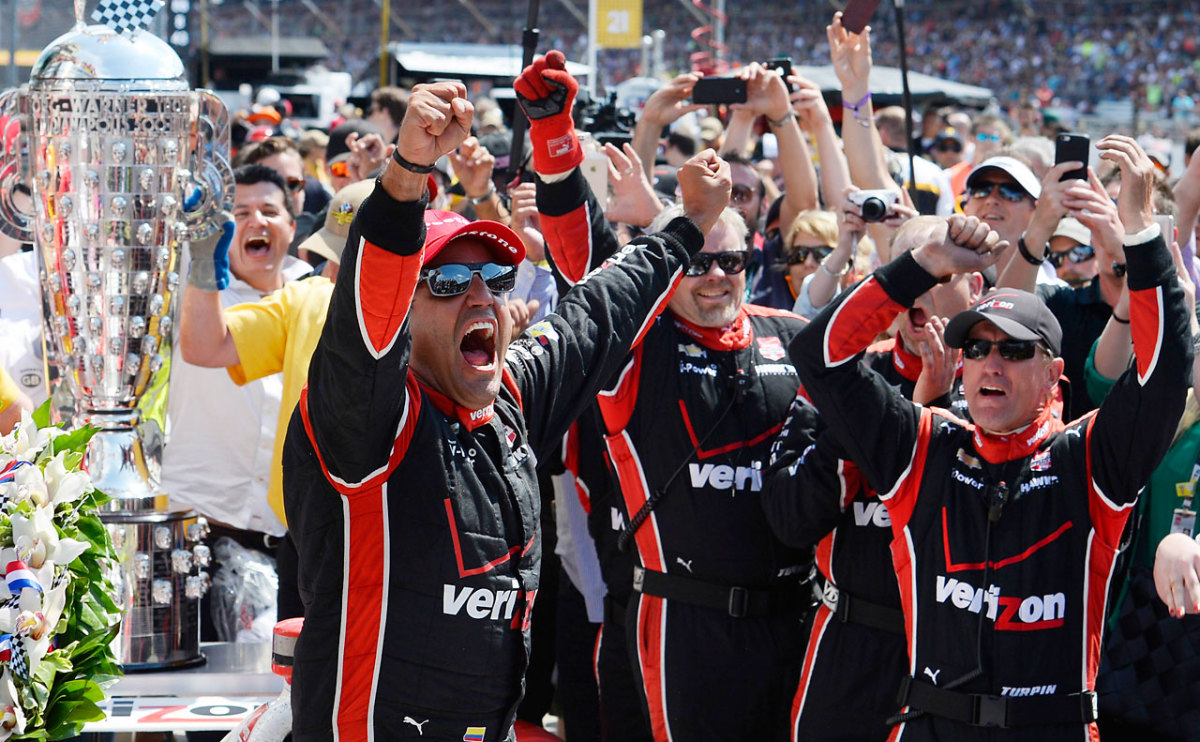
Juan Pablo Montoya of Colombia celebrates with his teammates after winning the 99th running of the Indianapolis.
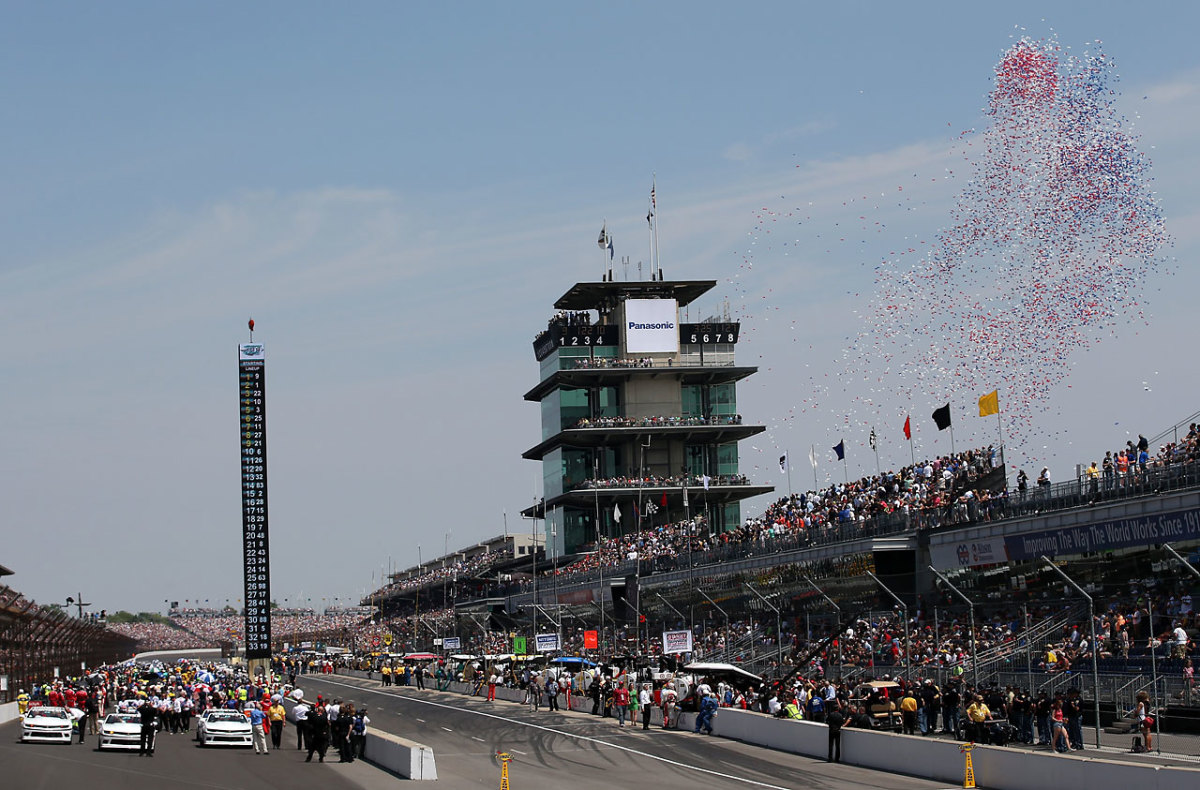
A general view of the start of the 99th running of the Indianapolis 500.
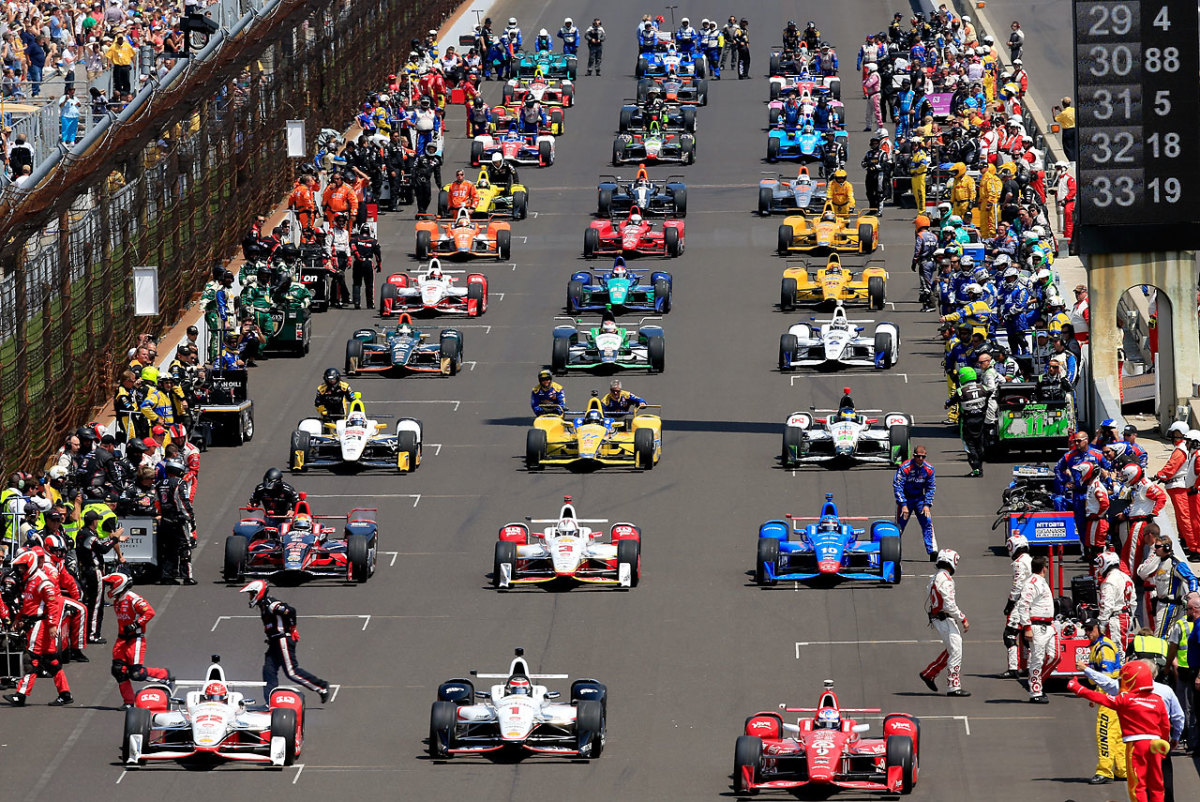
The cars roll off the grid just ahead of the Indianapolis 500.
Sage Karam's crash
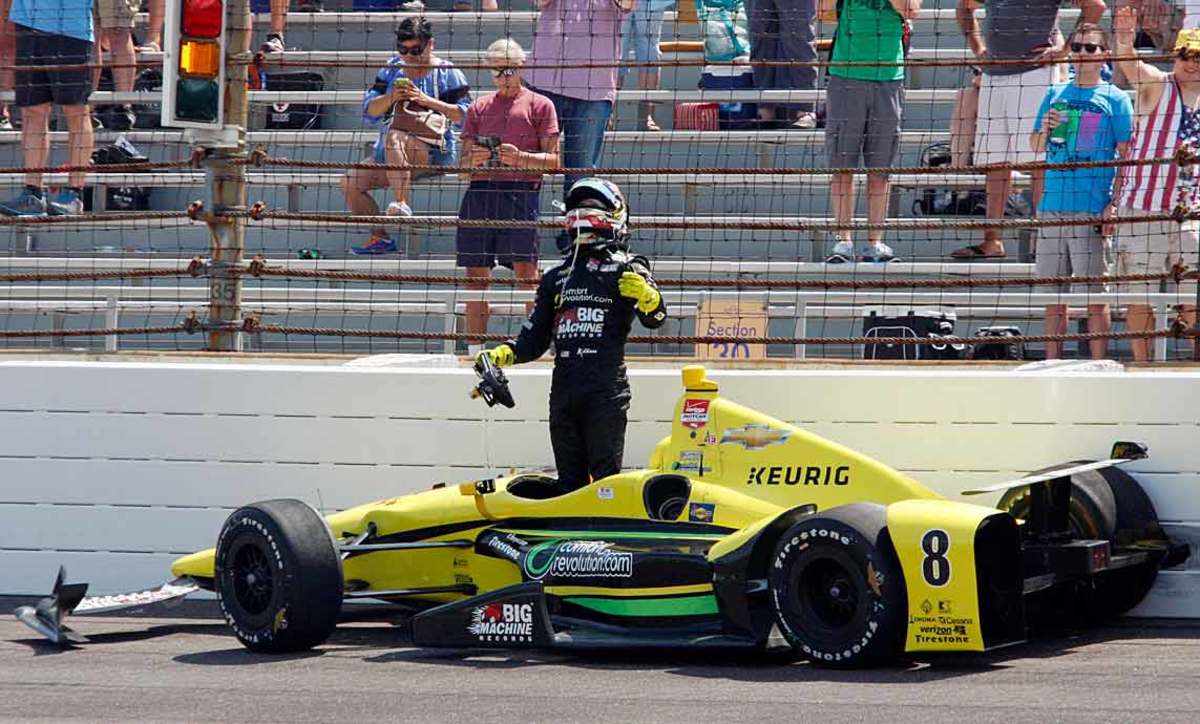
The race wasn’t a lap old and Sage Karam was done for the day. After making contact with Takuma Sato, the 20-year-old Karam was sent into the wall. It was the first of several wrecks, none of which was a dangerous airborne event like the ones in practice earlier in the week.
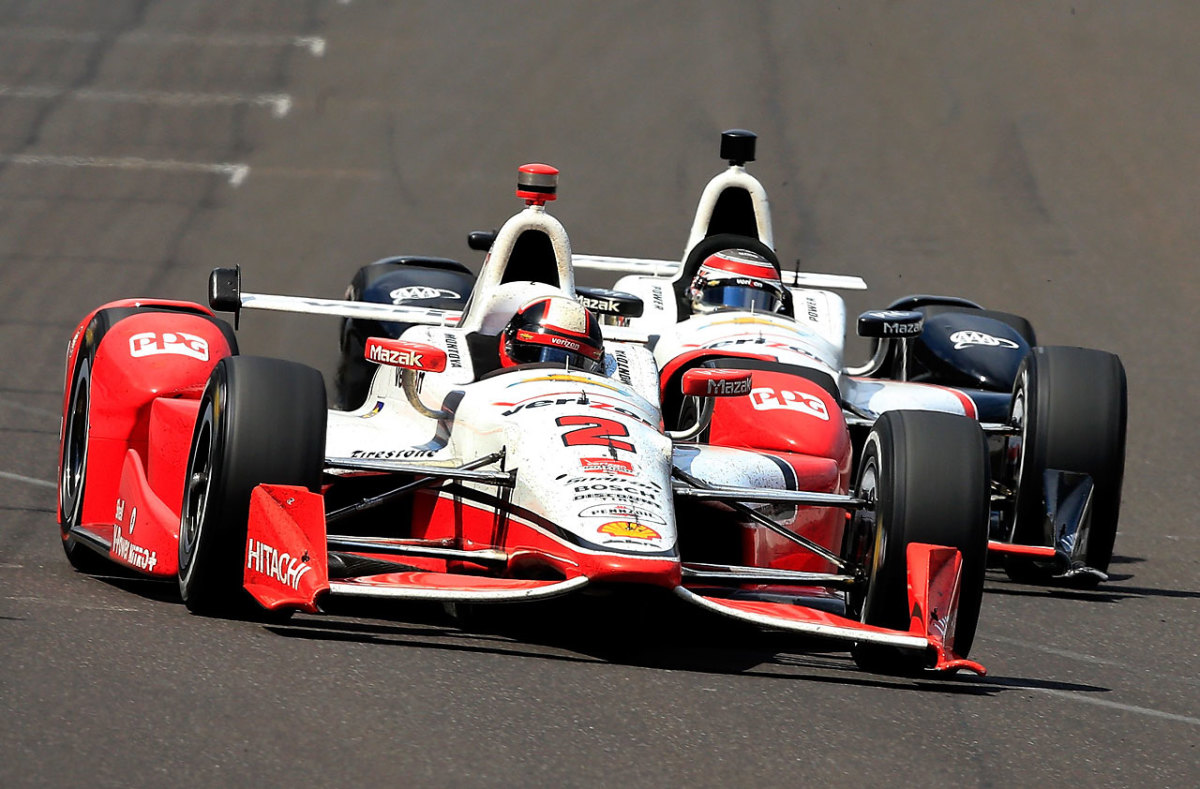
Juan Pablo Montoya, driver of the #2 Team Penske Chevrolet Dallara, races ahead of teammate Will Power of Australia, driver of the #1 Verizon Team Penske Chevrolet Dallara, on his way to winning.
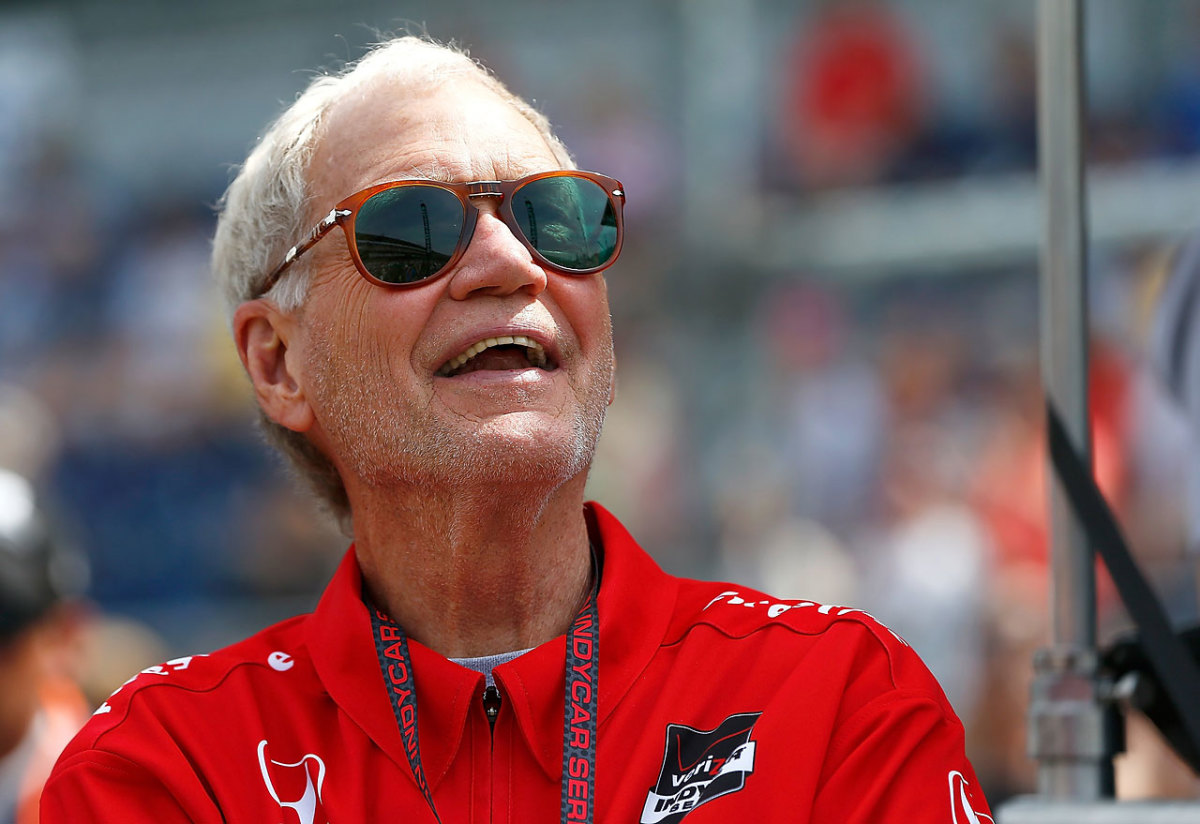
David Letterman sits in the pit before the 99th running of the Indianapolis 500.
Juan Pablo Montoya pits
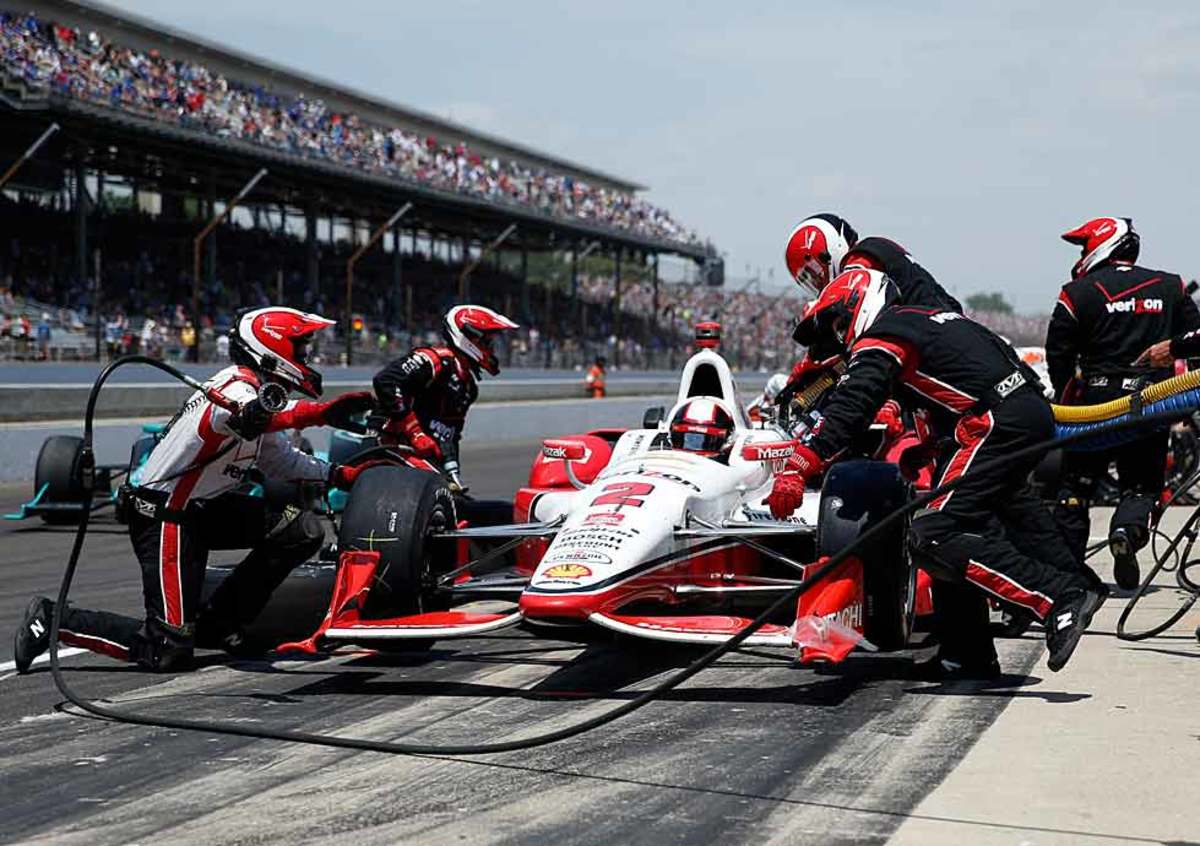
Juan Pablo Montoya overcame pit difficulties, including an unplanned stop to fix damage to the rear of his car and overshooting his stall, that knocked him back to 30th early in the race.
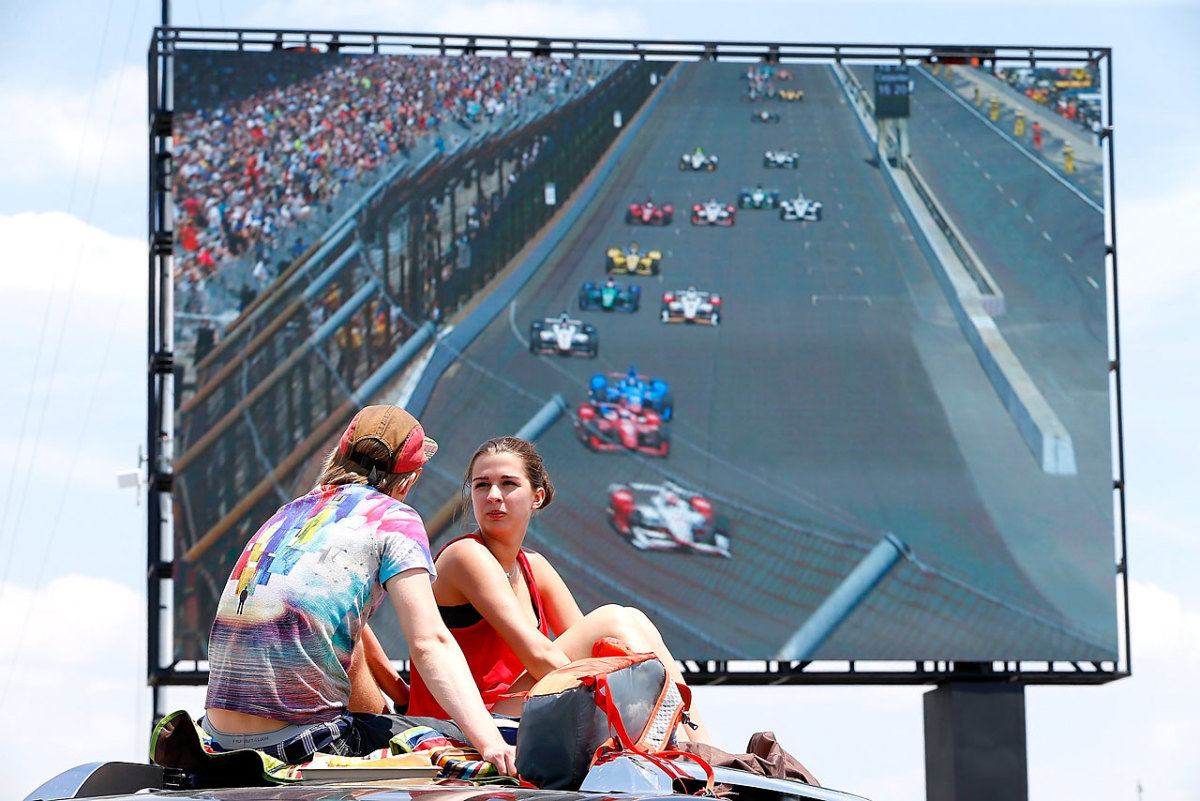
Fans sit atop their car to watch the race on a big screen TV.
Bryan Clauson wrecks
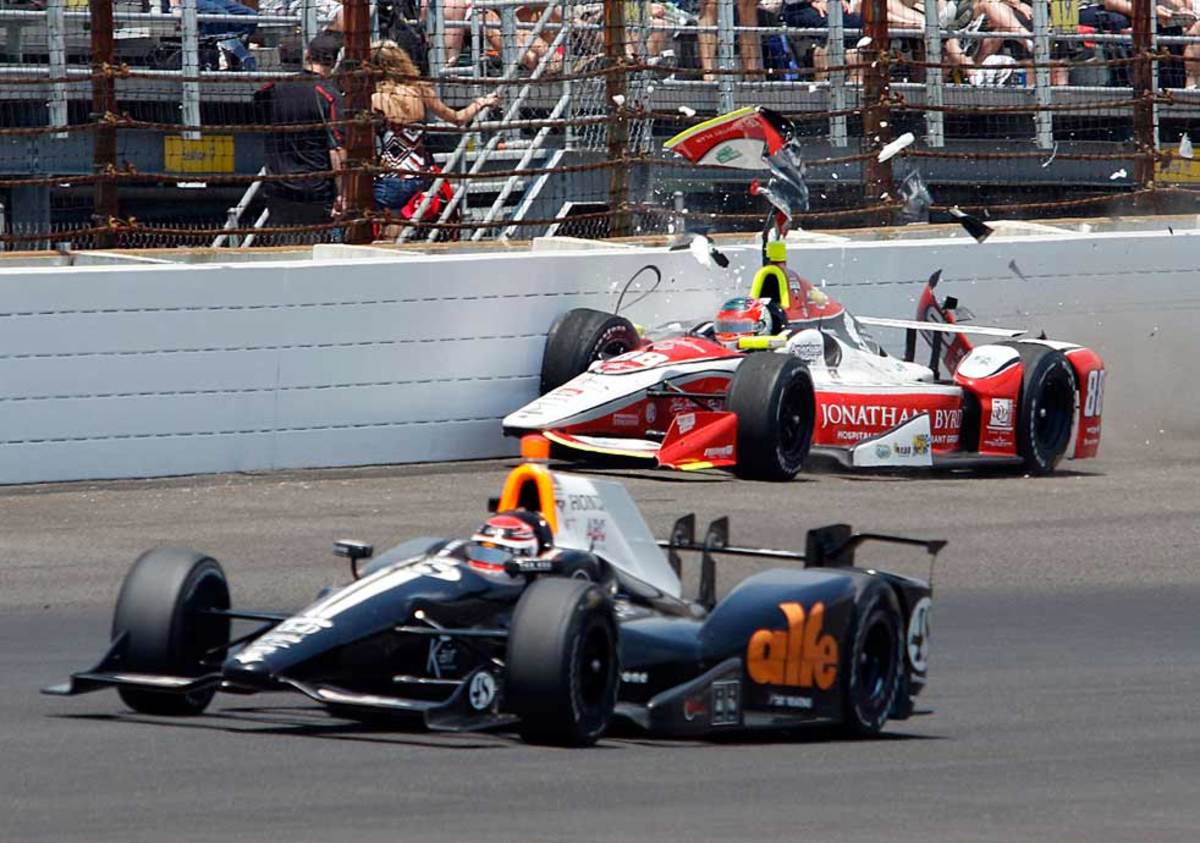
Alex Tagliani (foreground) avoids Bryan Clauson, who lost control on Turn 4 and hit the wall during lap 65. Clauson was one of eight drivers whose day was ended early by a crash. The others: Sage Karam, Ed Carpenter, Oriol Servia, Jack Hawksworth, Sebastian Saavedra, Stefano Colletti and Tony Kanaan.
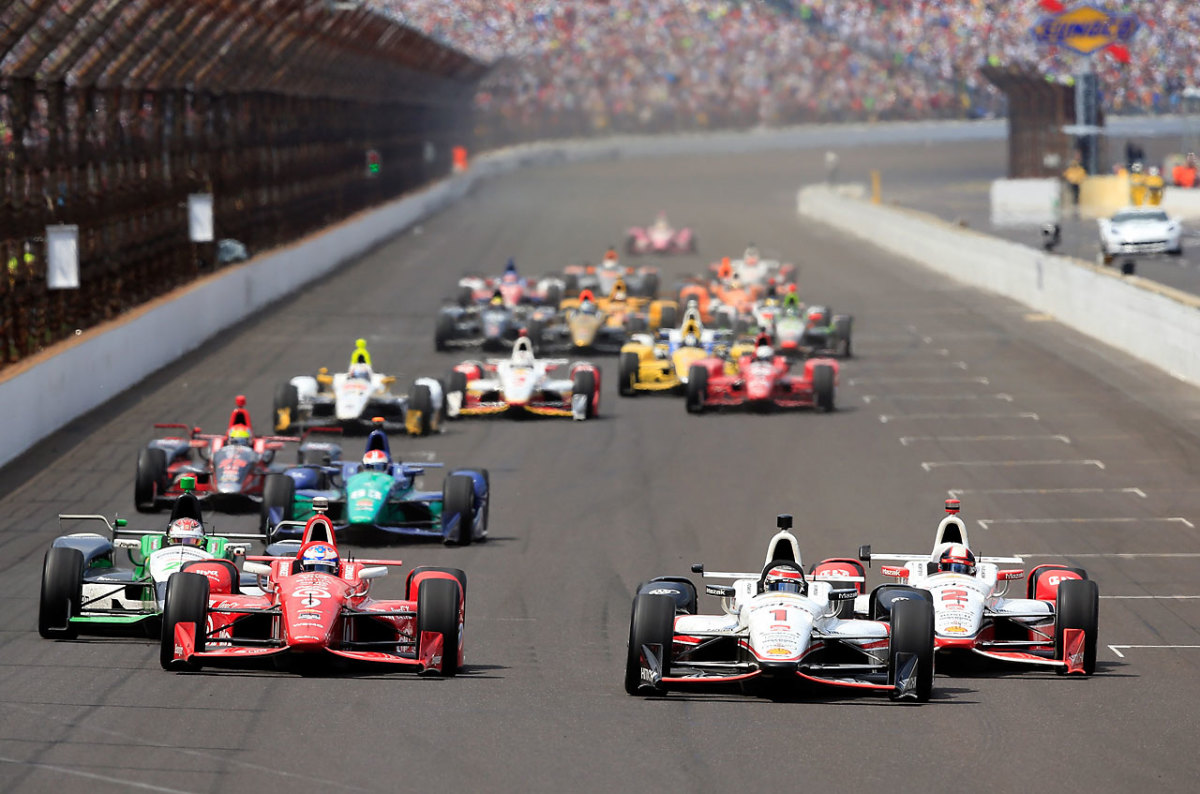
Scott Dixon of Australia races alongside Juan Pablo Montoya and Will Power after a restart.
Ed Carpenter's crash
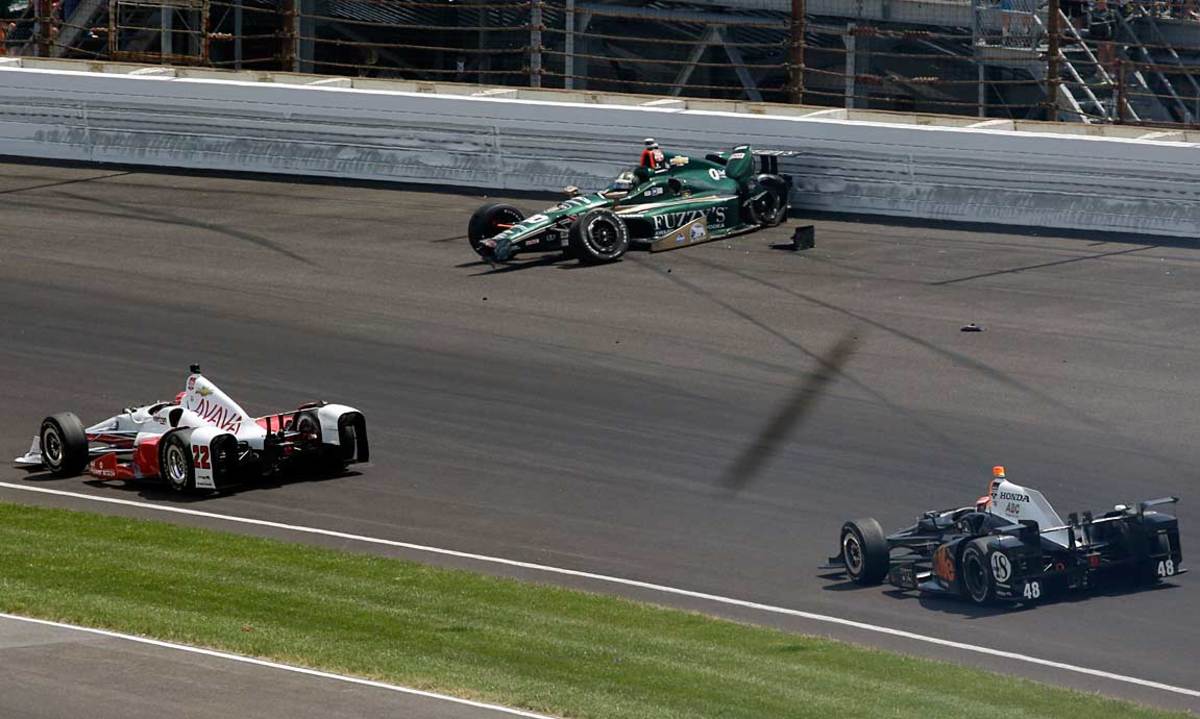
Ed Carpenter's car came skidding to a halt along the wall after he and Oriol Servia collided on Turn 1 with a little more than 250 miles in the books.
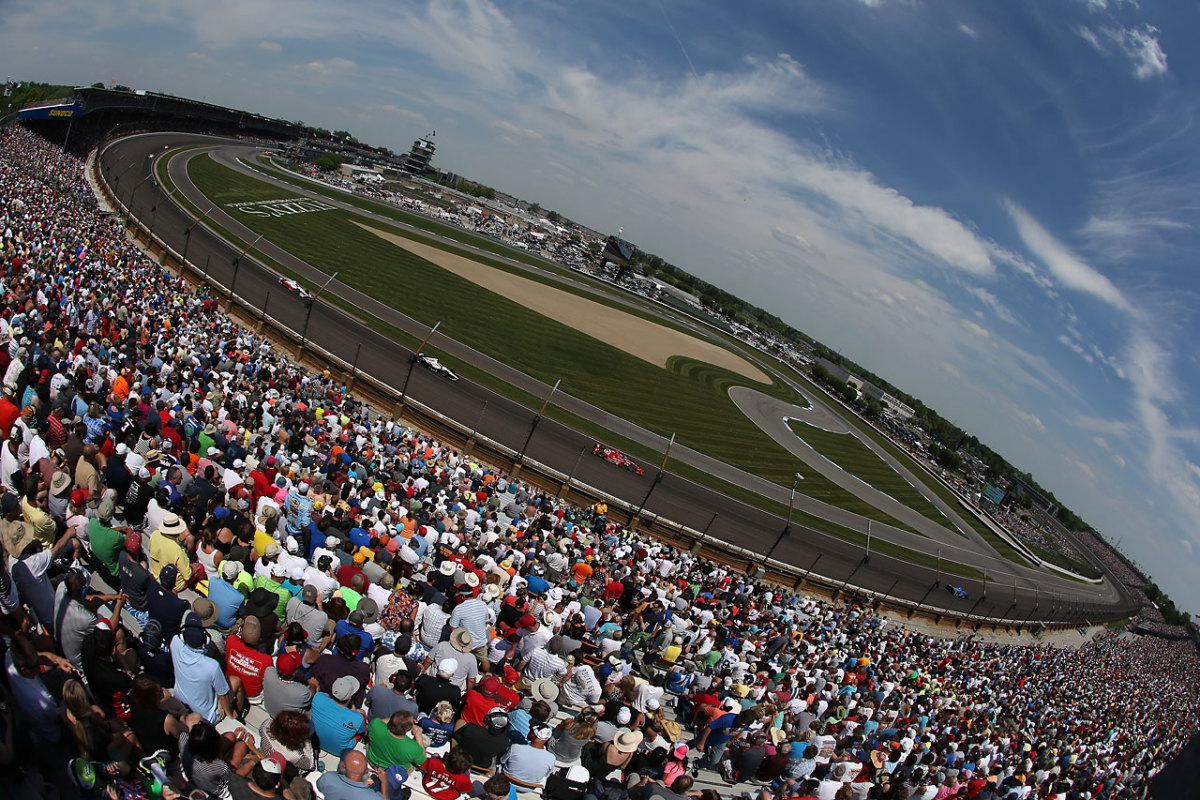
A general view of racing during the 99th running of the Indianapolis 500.
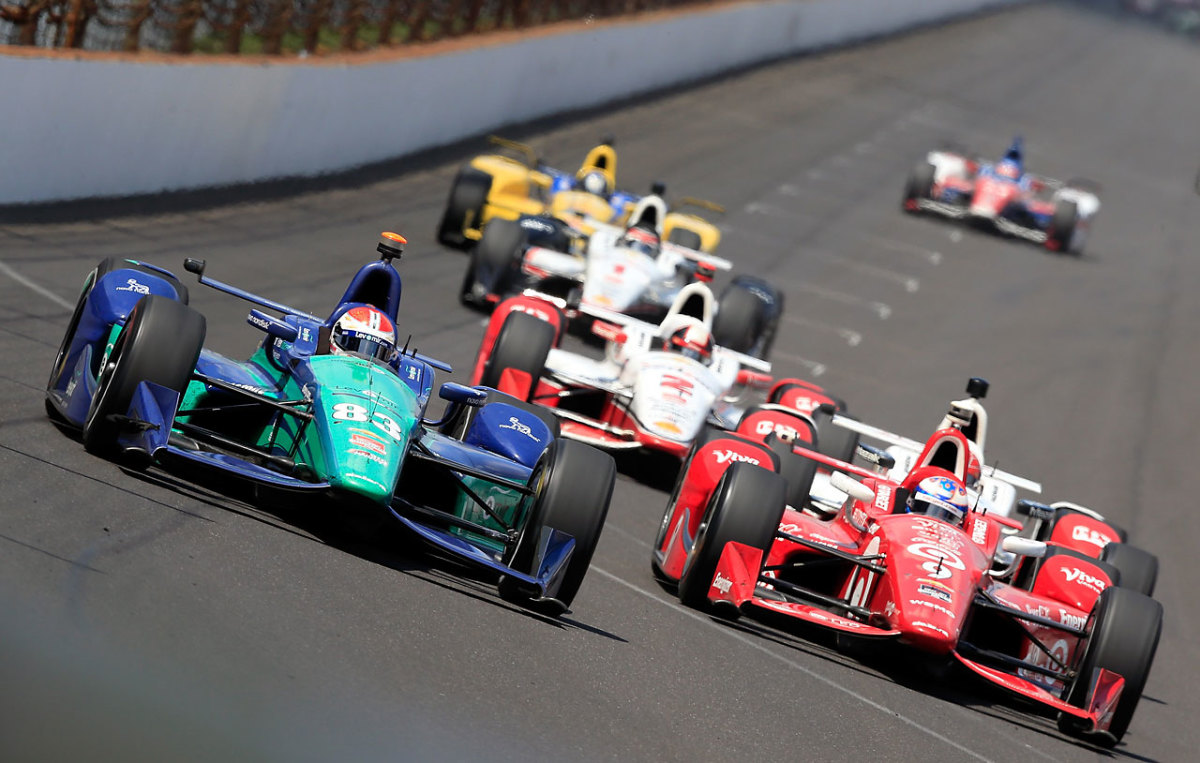
Charlie Kimball races ahead of a pack of cars during the 99th running of the Indianapolis 500.
Sebastian Saavedra wrecks
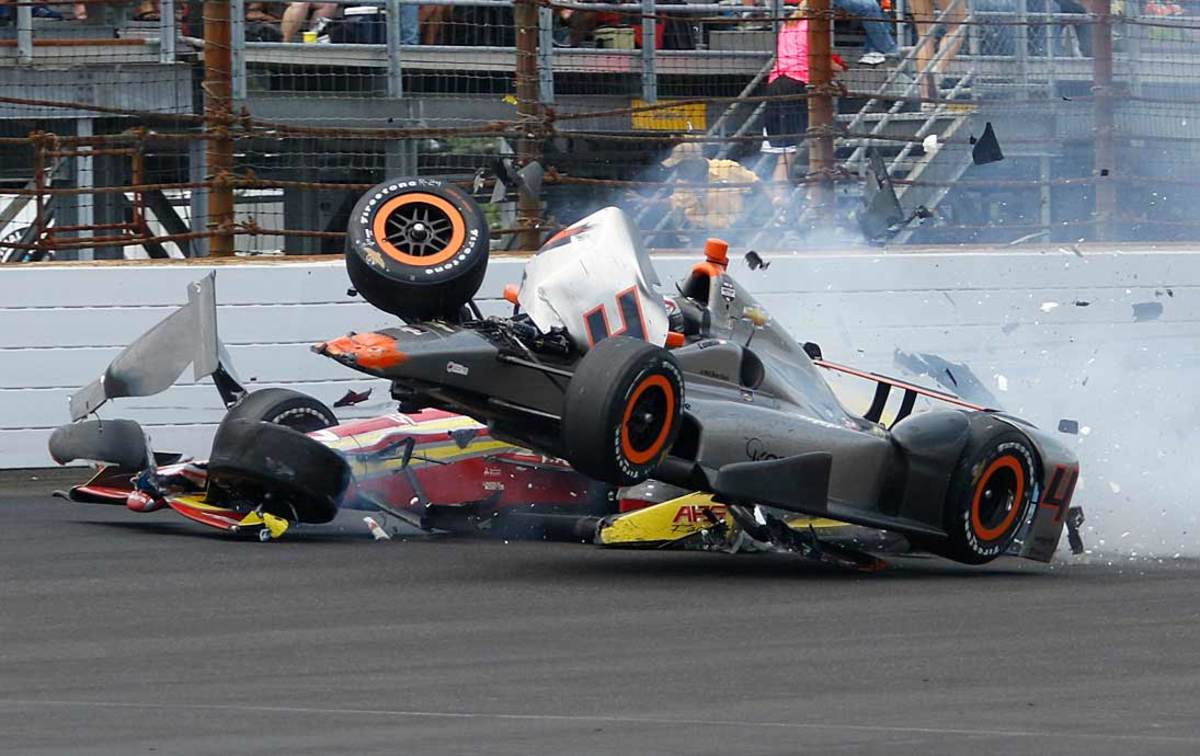
Stefano Coletti (top) collides with Sebastian Saavedra in the final laps.
Coletti-Saavedra-Hawksworth wreck
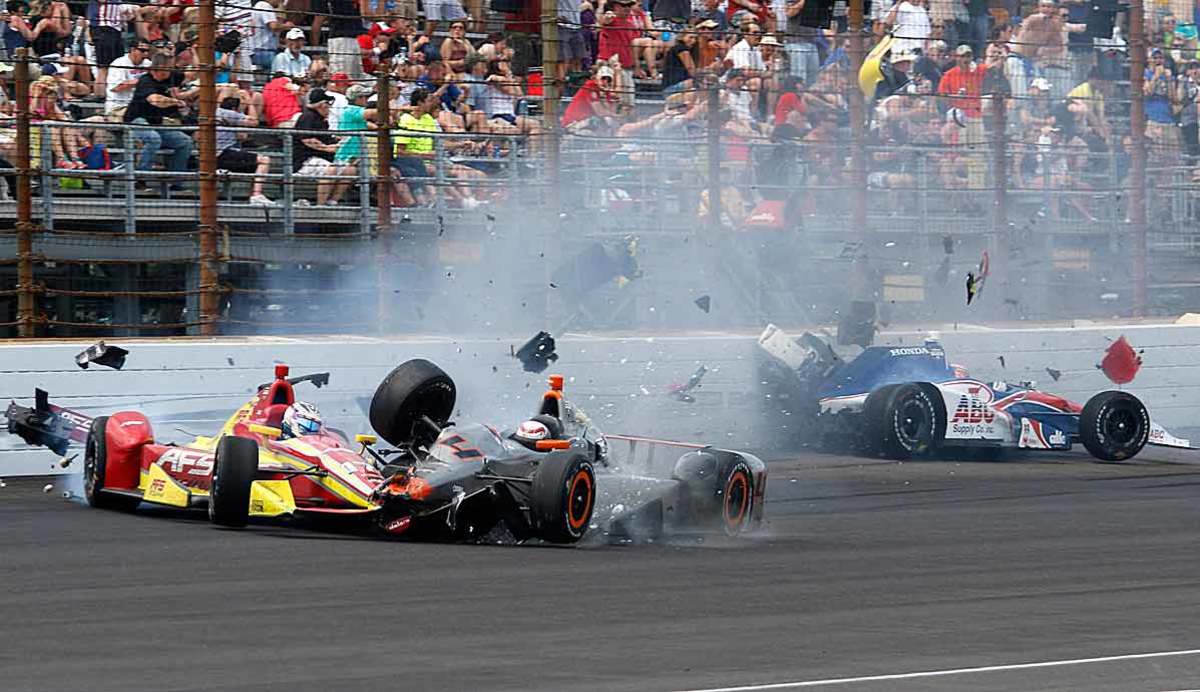
The Sebastian Saavedra-Stefano Coletti collision also took out Jack Hawksworth (right).
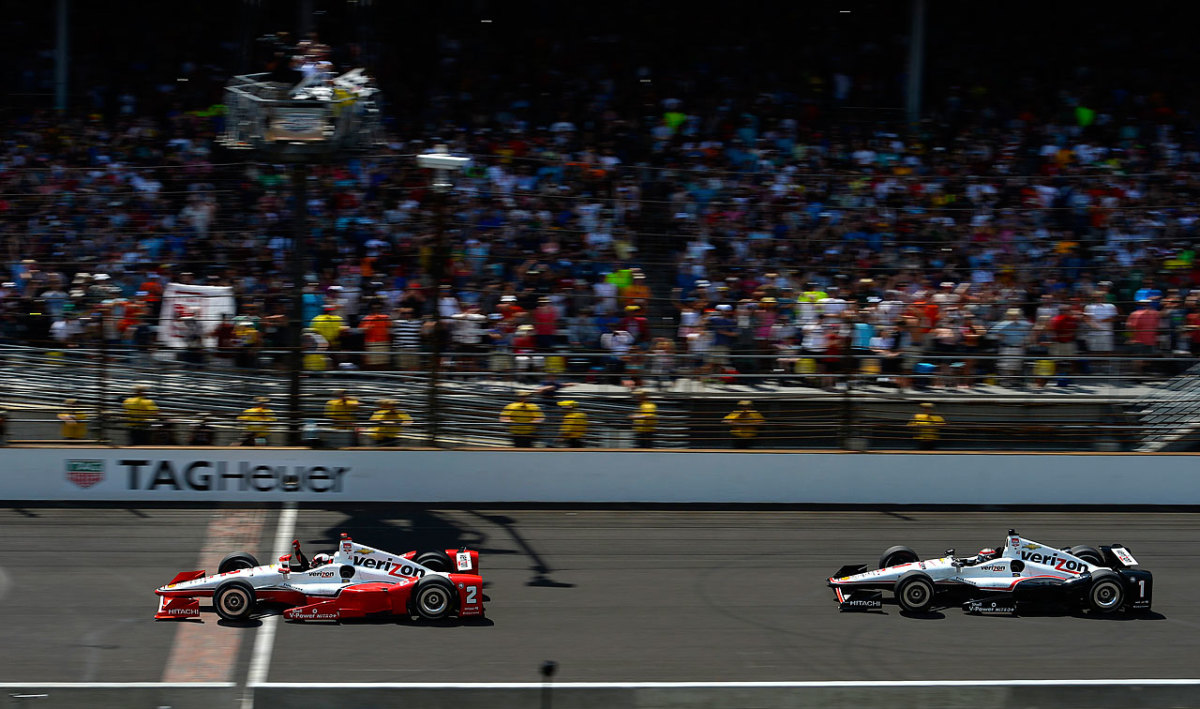
Juan Pablo Montoya crosses the finish line ahead of Will Power.
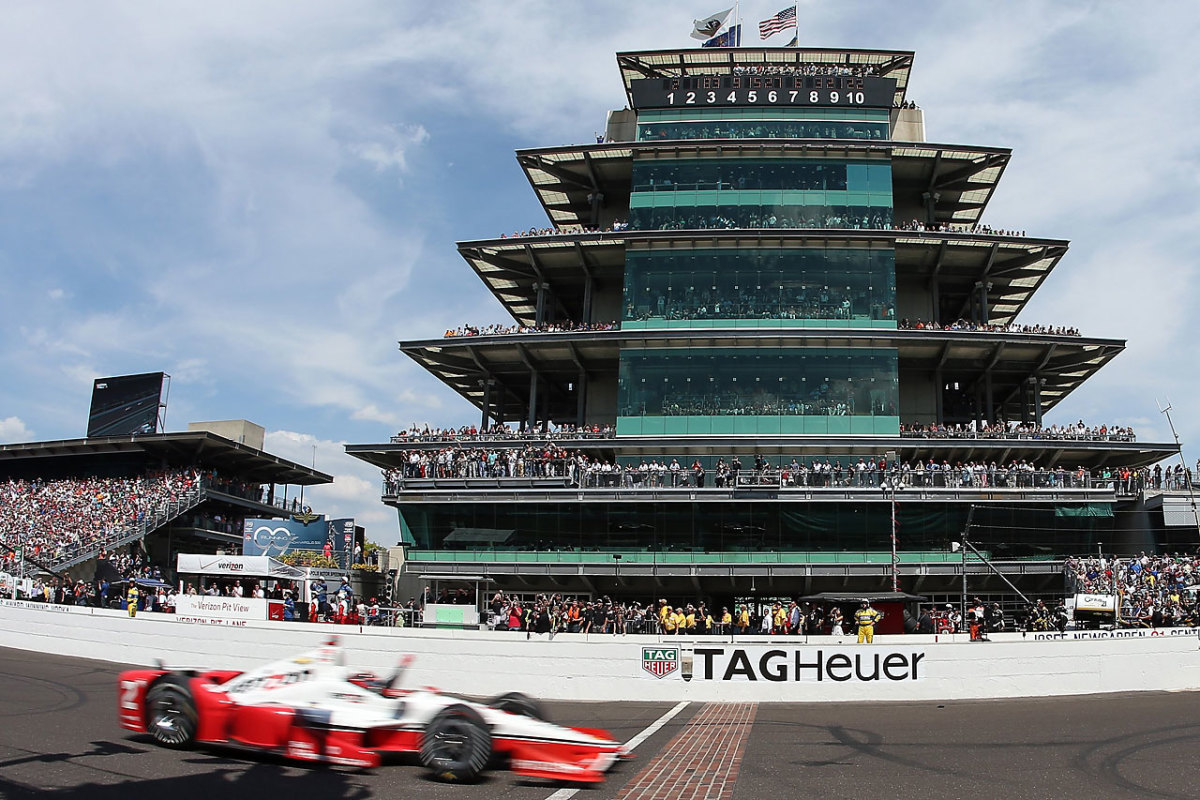
Juan Pablo Montoya celebrates as he crosses the finish line in Indianapolis.
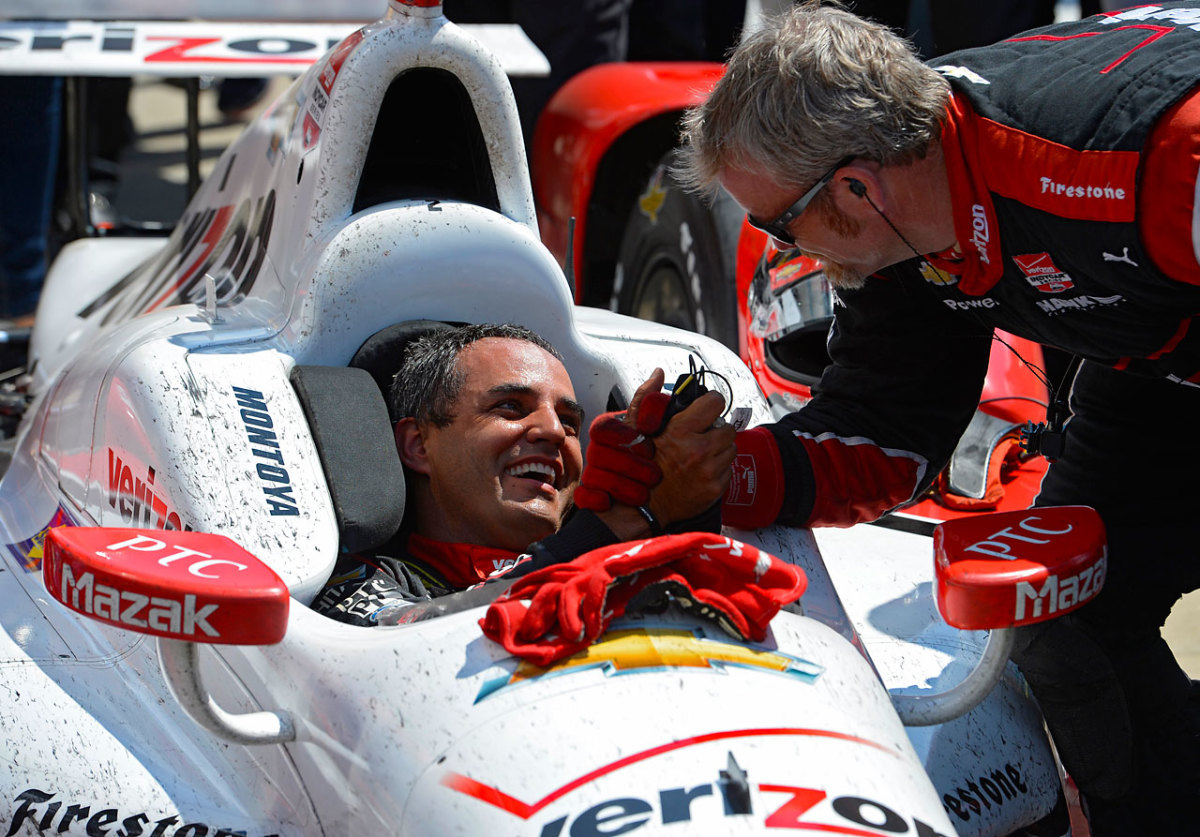
Juan Pablo Montoya celebrates with a teammate after winning.
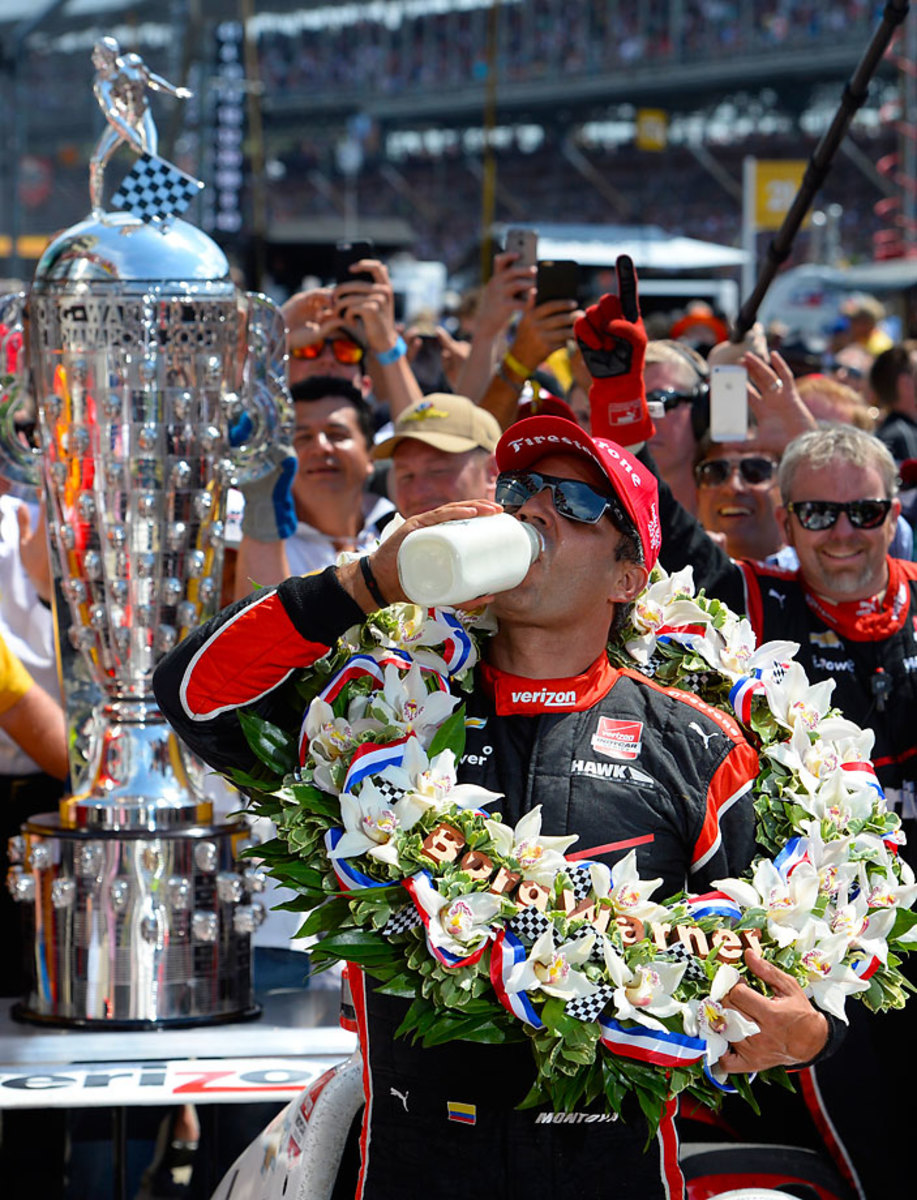
Juan Pablo Montoya takes the traditional drink of milk after winnning at Indy.
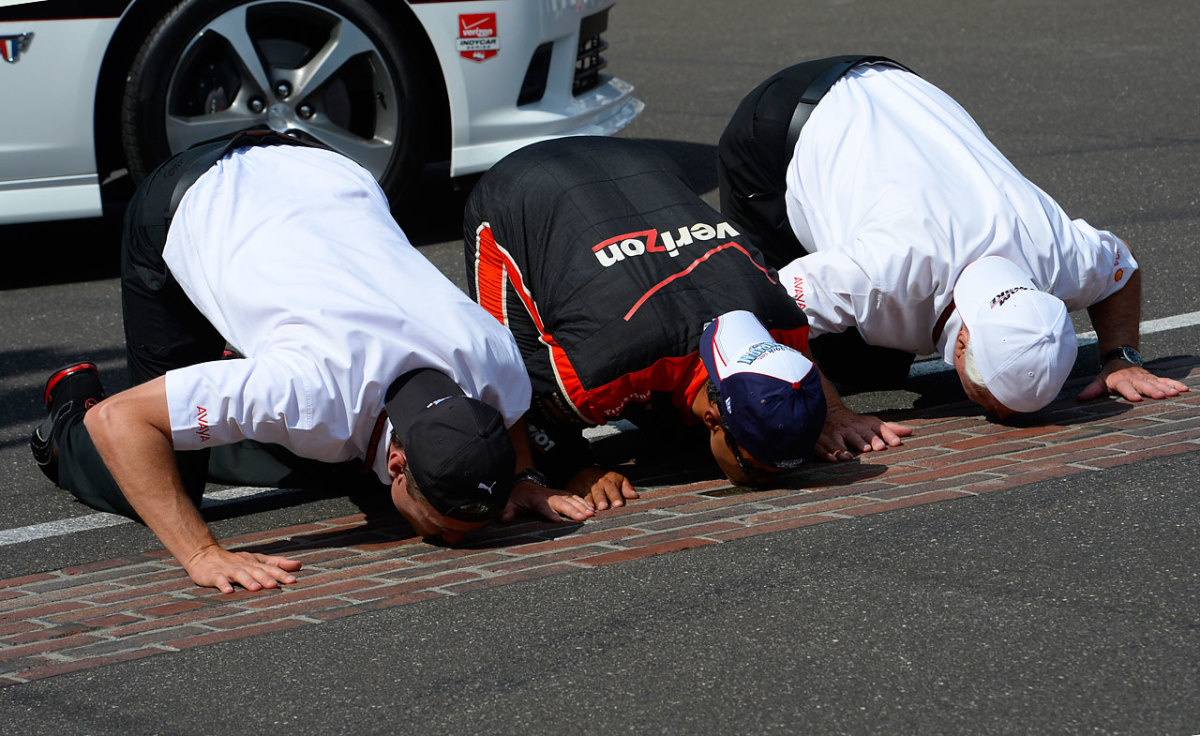
Tim Cindrik, Team Penske president, Juan Pablo Montoya and Roger Penske, owner of Team Penske, kiss the bricks after winning the Indianapolis 500.
Formula E, alas, is a purely spec series, which is to say that its cars are to be raced pretty much exactly the way they come delivered from the factory. Or so it will go for the next few years, until teams get the green light to tinker with not only the racecar body but the electric powertrain as well. The more teams tinker, the sooner they can bring an end to another of Formula E’s singular features: the need for drivers to switch cars halfway between races, which is about when the juice runs out. (Formula E races power down quickly too, in little more than an hour—which could be a good thing depending on how you organize your leisure time.)
Not that inconvenience—on the part of competitors and that of hard core petrolheads, who are inclined to dismiss the series based on that pit stop quirk alone—is the only impetus behind the series’ innovative spirit. There’s the commercial payoff. A fast car with a huge battery range doesn’t just have potential on track, after all.
“Next year the motors are going to be open,” says Dario Franchitti, a three-time Indy 500 winner who has become a Formula E TV analyst in retirement. “And then the following year the batteries are gonna be open as well. That’ll start getting passed down to car manufacturers who are working with electric vehicles.”
And then, of course, there’s the environment payoff. Out of the gate, Formula E set an impossibly high bar for itself, insisting on recharging car batteries from natural sources (solar, hydroelectric and algae), on transporting big box items by sea and on purchasing carbon credits in bulk to offset the cost of airlifting its people and their things.. The net effect is more than just clean racing. It’s guilt-free sports entertainment in an era when fandom is an exercise in cognitive dissonance.
In stick-and-ball games, the icky stuff (greed, corruption, doping) take some sussing out. In motorsports, it belches right out of the tailpipe. Granted, IndyCar, NASCAR and others have taken great pains to reduce their consumption over the years, switching to corn-based fuels among other measures. But at the end of the day, they still top off by the ton.
Meanwhile, Formula E is easy on polar bears and budgets, alike. Agag reckons the average operating cost of a team, once the series hits its stride, will be a cool $1 million. In a fossil fuel series, that barely covers a year’s worth of tires. “It’s not anymore a time where we want teams to spend a billion in the racing program,” Agag says. “We want to develop the technology, but also do something that makes sense.”
They want to be green and save green along the way. “The way I look at it, if we can develop the technology in electric cars quicker, it’s going to leave more fossil fuel for us to play with in the other style of car,” says Franchitti, who nonetheless remains impressed with Formula E’s out-of-the-box success. “I think they’ve done a great job, for their first season, building their organization and their events. They’ve put on terrific racing.”
It ain’t over yet. There’s still this weekend’s championship round to go. Di Grassi will have his hands full chasing the driver just ahead of him, another Brazilian named Nelson Piquet Jr., and holding back the two just behind him: Switzerland’s Sébastien Buemi and France’s Nicolas Prost. The championship winner gets a $2.6 million bonus, enough to launch two Formula E teams, maybe.
Win or lose, these drivers have definitely started something. It took Agag, a crackpot no more, to get them and, perhaps, the rest of the motorsports world moving in a new direction.
